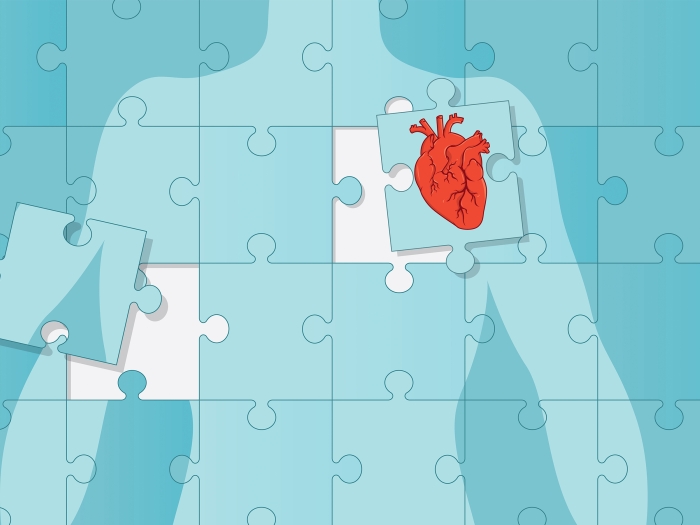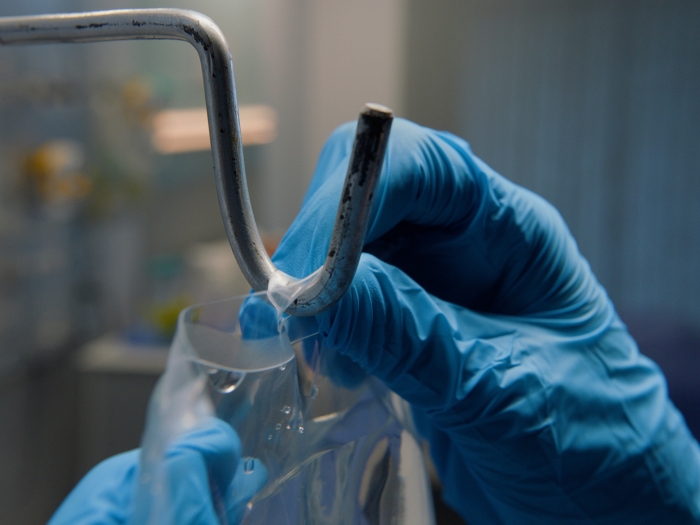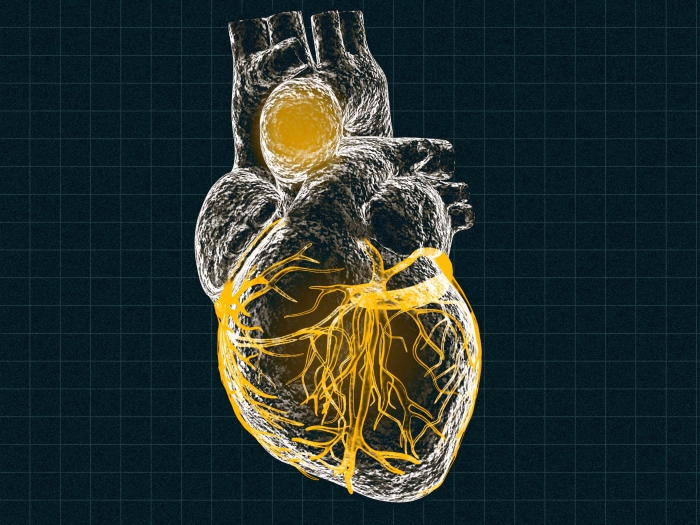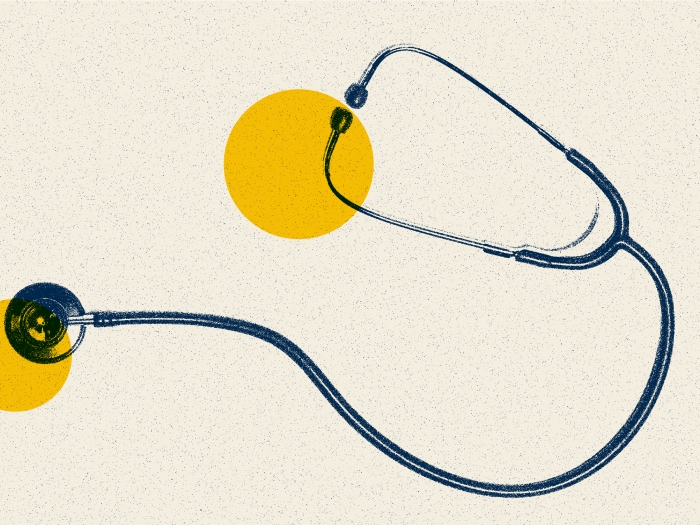Findings could lead to therapies that cure HIV
5:00 AM
Author |
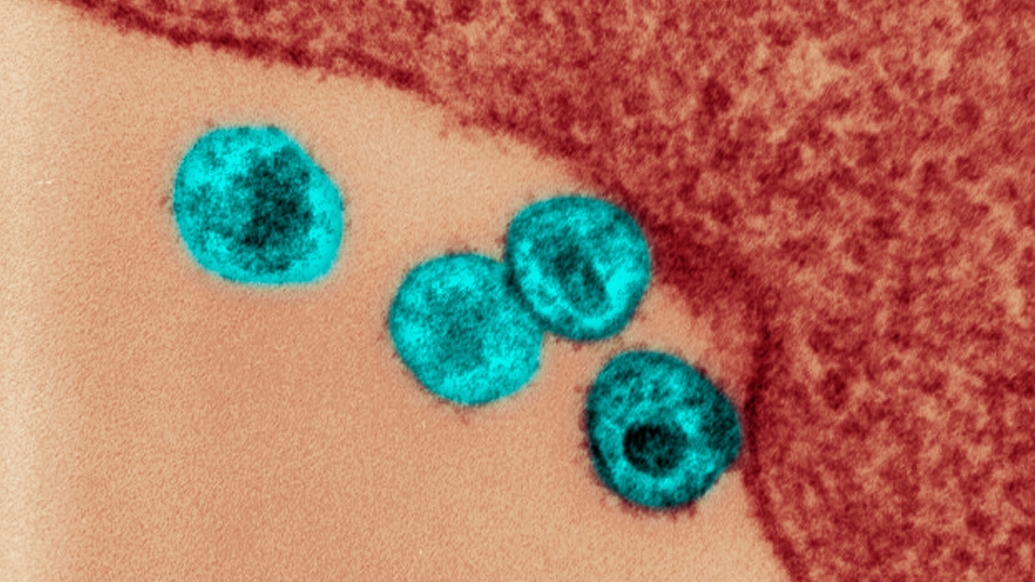
A team of University of Michigan researchers has successfully modified a naturally occurring chemical compound in the lab, resulting in advanced lead compounds with anti-HIV activity.
Their results, published March 7 in the Journal of Medicinal Chemistry, offer a new path forward in the development of drugs that could potentially help cure — rather than treat — HIV.
Although effective treatments are available to manage HIV, a cure has remained elusive due to the virus’s ability to hide from the immune system, lying dormant in reservoirs of infected cells.
“With most viruses, when people get infected, they get sick for a while and then the immune system kicks in and the virus is cleared,” explains Kathleen Collins, M.D., Ph.D., a professor of microbiology and immunology at the U-M Medical School. “But with HIV, once a patient is infected, that virus will persist for their entire life —meaning they must remain on treatments indefinitely.”
Nef protein
One key to HIV’s ability to remain hidden in patients’ cells is a protein that the virus makes, called Nef. This protein shuts down a system that the cell would normally use to alert the immune system to an infection, thus preventing the immune cells from recognizing and clearing the virus.
Collins and her lab have been studying this protein for more than 15 years, investigating how it works and how it can be disabled. She and David Sherman, Ph.D., a professor at the U-M Life Sciences Institute, previously discovered that a chemical found in nature can inhibit HIV Nef, allowing the immune system to find and eliminate virally infected cells: a compound called concanamycin A (CMA), which is produced by a soil-derived microorganism.
In its natural form, however, CMA presents several challenges as a potential therapeutic. The first challenge the team had to overcome was supply. While CMA is a naturally occurring compound, the original bacteria that produces it does so in quantities far too small to be useful for testing and modification in the lab.
Primary target
Another major challenge with developing CMA as an anti-HIV drug is that Nef is not CMA’s primary target.
“CMA’s main job in human cells is to inhibit an enzyme called V-ATPase, which we absolutely do not want to block in this case,” explains Sherman, who is also a professor in the U-M College of Pharmacy, Medical School, and College of Literature, Science, and the Arts. “So, we needed to find a way to modify CMA’s activity, widening the effective dosage gap between when it starts to inhibit the target we’re aiming for — HIV Nef — without affecting V-ATPase, its typical cellular target.”
With this latest research, the team has overcome both challenges. Using bioengineering, Sherman’s team was able to develop a bacterial strain that increased CMA production 2,000-fold. Synthetic chemists in the lab then created more than 70 new variations of the compound, swapping out different chemical groups, to test for their potency against HIV Nef.
Collins’ lab team ran the new compounds through a battery of tests to measure their toxicity to cells, as well as how they affected the activities of both HIV Nef and V-ATPase.
“Even though we know that CMA is extremely active against the HIV Nef protein, all drugs have side effects,” says Collins, who is also a professor of internal medicine at the Medical School. “And so we wanted to ensure we’ve done everything we can to minimize the side effect profile of the drug before we consider putting it into an animal or human.”
Important problems solved
The team now has several CMA analogs that show high potency in blocking HIV Nef at very low dosage levels, without interrupting off target effects or causing toxicity in human cells. They caution, however, that several important steps remain before the compounds would be ready for further testing in a clinical setting.
“We are really encouraged, though, because our groups have solved some very important problems,” Sherman says. “We have engineered microorganisms to produce sustainable supplies of the natural product molecules and have really good chemical methods to make new analogs. And we have the methodologies in place to continue tracking the critical toxicity and potency parameters to further reduce off-target effects.”
Additional authors: Include Morgan McCauley, Matthew Huston, Alanna R. Condren, Filipa Pereira, Joel Cline, Marianne Yaple-Maresh, Mark M. Painter, Gretchen E. Zimmerman, Andrew W. Robertson, Nolan Carney, Christopher Goodall, Valeri Terry, David H. Sherman, and Kathleen L. Collins of the University of Michigan; and Rolf Müller of Hemholtz Institute for Pharmaceutical Research, Germany
Citation: “Structure-activity relationships of natural and semisynthetic plecomacrolides suggest distinct pathways for HIV-1 immune evasion and vacuolar ATPase-dependent lysosomal acidification,” Journal of Medicinal Chemistry. DOI: 10.1021/acs.jmedchem.3c01574
Sign up for Health Lab newsletters today. Get medical tips from top experts and learn about new scientific discoveries every week by subscribing to Health Lab’s two newsletters, Health & Wellness and Research & Innovation.
Sign up for the Health Lab Podcast: Add us on Spotify, Apple Podcasts or wherever you get you listen to your favorite shows.

Explore a variety of healthcare news & stories by visiting the Health Lab home page for more articles.

Department of Communication at Michigan Medicine
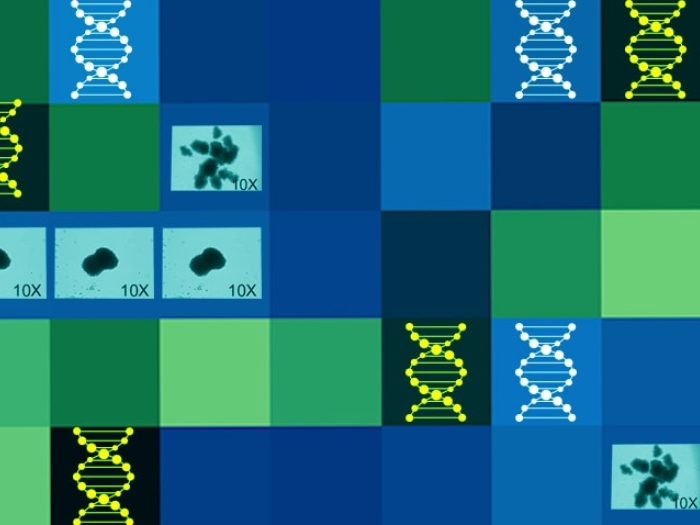
Want top health & research news weekly? Sign up for Health Lab’s newsletters today!


